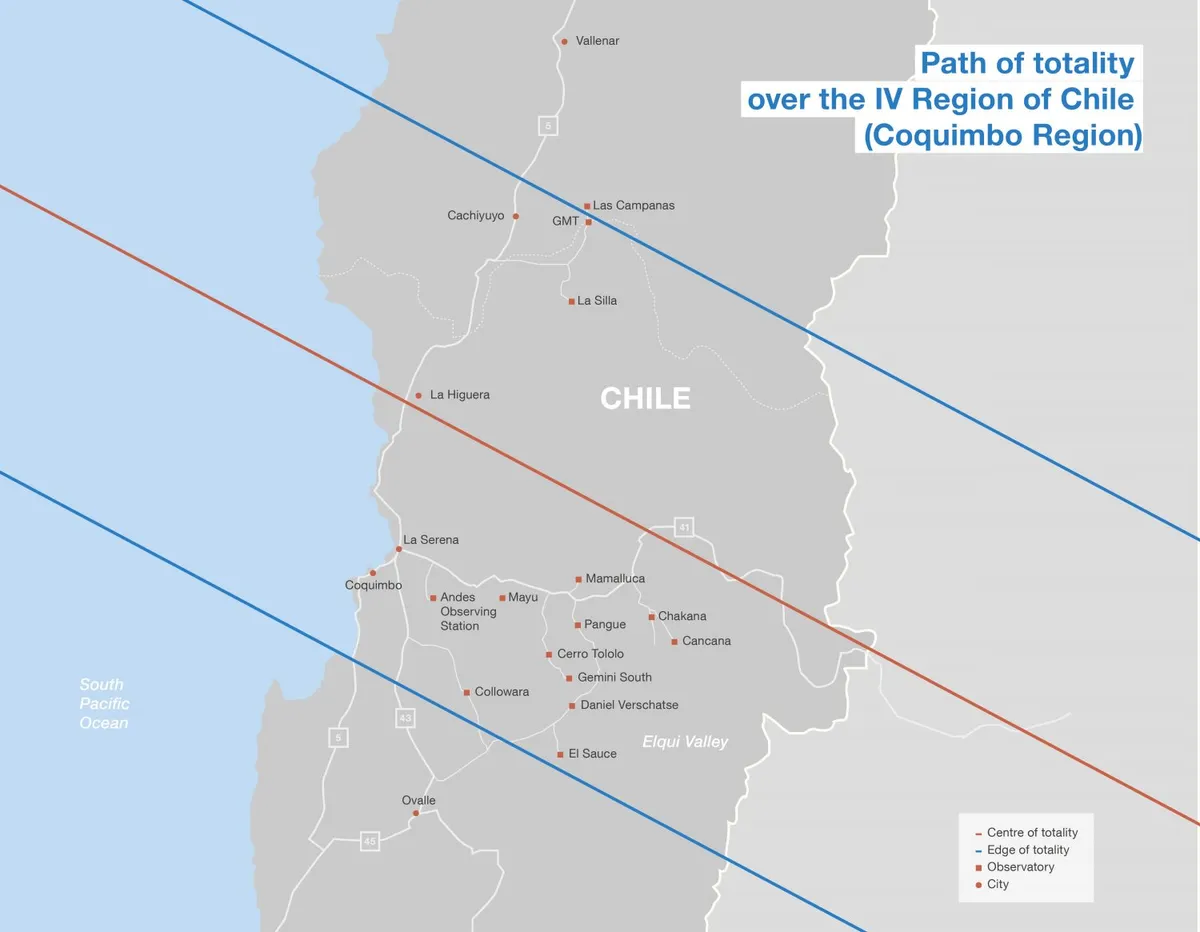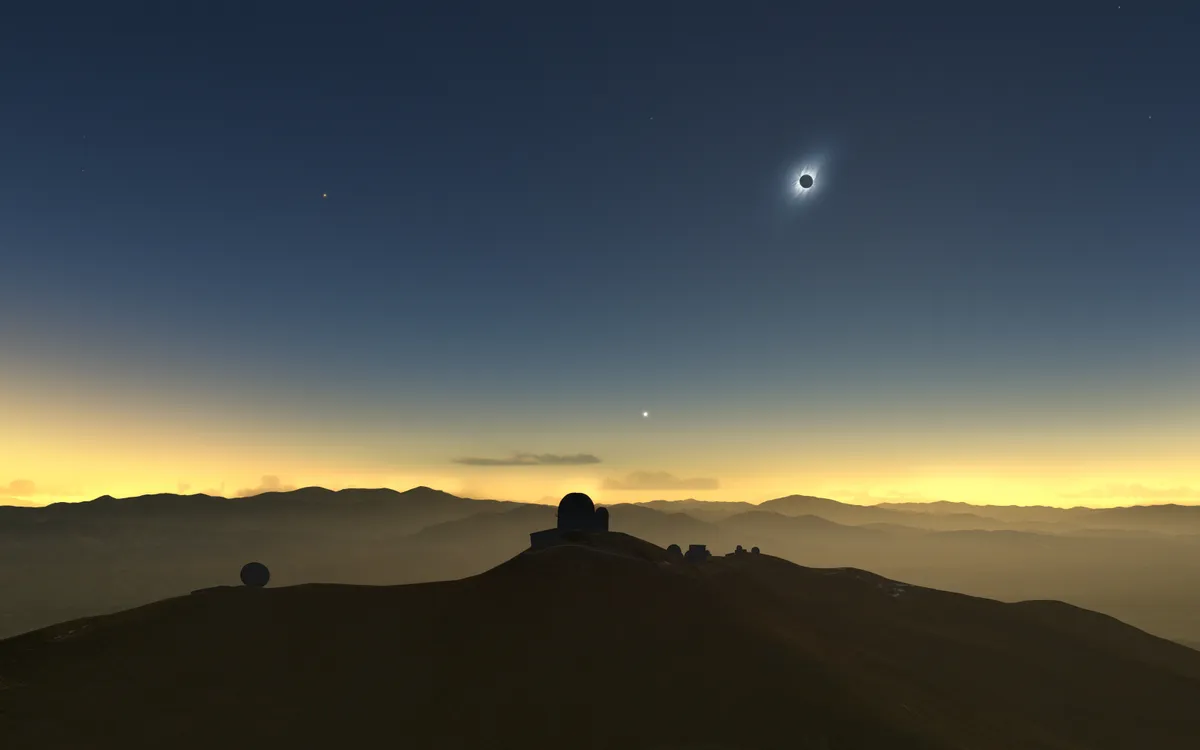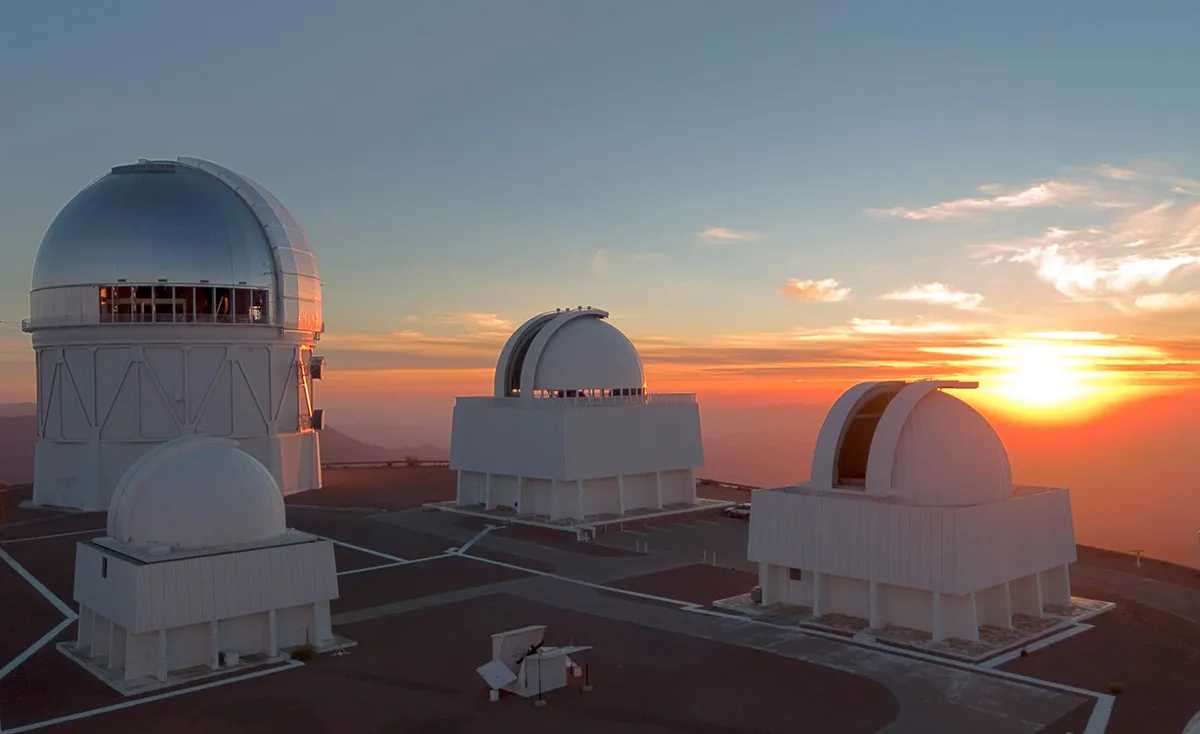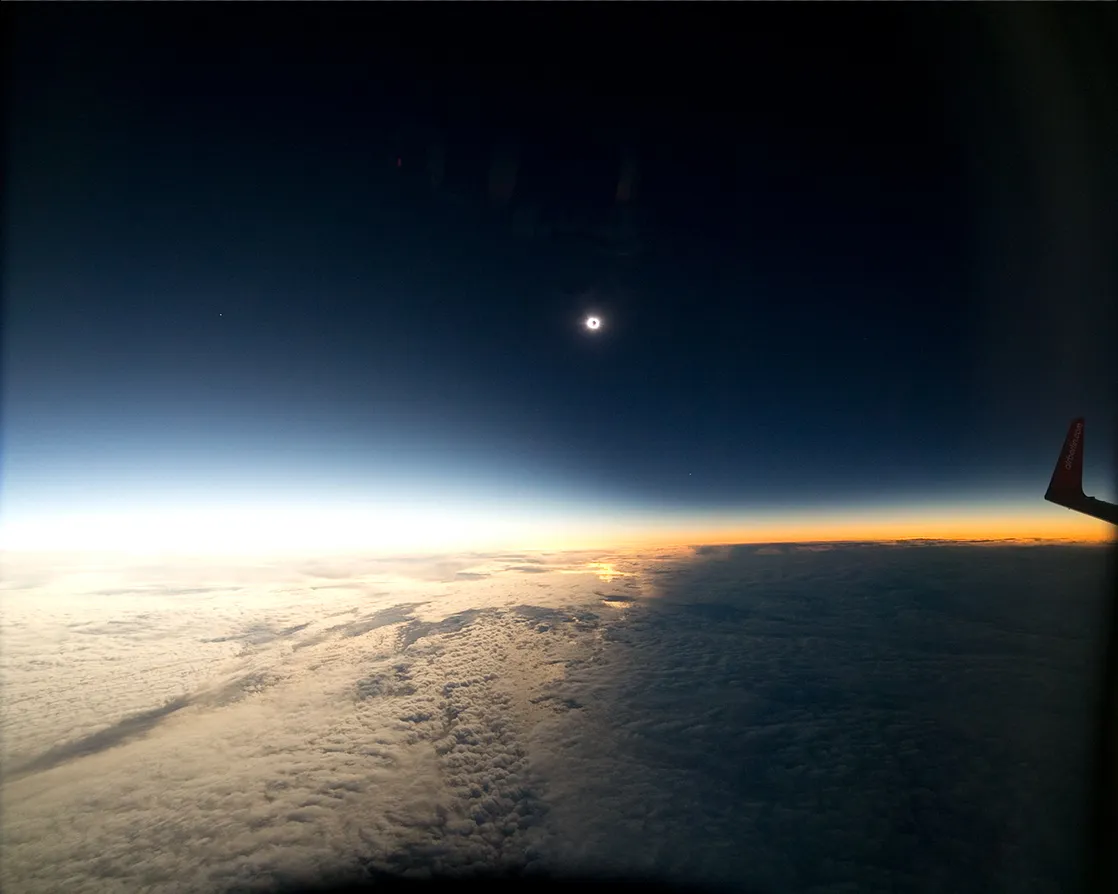The solar eclipse of 2 July 2019 is set to be one of the astronomical events of the year. In the South Pacific, Chile and Argentina eclipse-chasers will get a brief darkness in the day and a chance to glimpse a total solar eclipse: surely the most specular astronomical sight of all.
The Sun’s outer atmosphere, the corona, is only visible during a total solar eclipse.
Its momentary appearance around the Moon during totality takes the form of a majestic, pulsing bright white halo.
Though the corona is visible for just a few minutes, this ‘totality’ is something eclipse-chasers travel the world to experience.
When and where is the total solar eclipse happening?
On Tuesday 2 July 2019, as many as a million people will watch the new Moon slip precisely across the Sun to herald a maximum 2 minutes 35 seconds of totality visible from South America: mostly from northern Chile and northwest Argentina, though a few cruise ships in the South Pacific will get in first and bag an extra minute of totality.
Total solar eclipses occur roughly once every 18 months or so, and geographically speaking they’re a challenge to observe. That goes double for this one.
Although a vast area of Earth’s southern hemisphere will see a partial solar eclipse - something that must be observed through eclipse glasses - only a narrow 120 km-wide track will see totality.
Under the Moon’s central shadow will be the Chilean towns of La Serena and Coquimbo, and inland – where skies are more likely to be clear (after all, July is winter in the southern hemisphere) – around La Higuera and Vicuña and, across the Andes in Argentina, around Bella Vista and Rodeo.

Where will eclipse-chasers be?
To mountainsides, ranches and vineyards in Chile and Argentina is where most eclipse-chasers are headed, but there’s another problem.
The path of totality, which travels west to east, only touches the Chilean coast towards the end of the day, when the Sun and Moon will be close to the northwest horizon.
In the mountainous areas of Chile and Argentina, dodging the shadows of mountains is as much of a challenge as dodging clouds.
It’s highly recommended to use Google Earth and/or planetarium apps that allow you to overlay the positions of the Sun and Moon on your environment at the exact time of the eclipse.
To double-check, be in your intended observing position at the exact time of the eclipse the day before.
Those who want to travel to the path of totality should memorise the following times and totality lengths for the 2 July eclipse:
- North of Oeno, Pitcairn Islands, South Pacific: 10:23 a.m. (2 minutes 49 seconds)
- La Serena, Chile: 16:38 (2 minutes 11 seconds – though clouds are common on the coast here)
- La Higuera, Chile: 16:38 (2 minutes 35 seconds)
- Vicuña, Chile: 16:38 (2 minutes 20 seconds)
- Bella Vista, Argentina: 17:43 (2 minutes 28 seconds)
- Rodeo, Argentina: 17:43 (2 minutes 17 seconds)
- Las Flores, Argentina: 17:43 (2 minutes 26 seconds)

Why are astronomers excited?
Despite the challenges, the 2019 total solar eclipse constitutes a celestial jackpot for some of the world’s top observatories that just happen to be under the narrow path of totality.
The European Southern Observatory’s La Silla compound – home to the 3.6m telescope, New Technology Telescope (NTT) and the Transiting Planets and Planetesimals Small Telescope (TRAPPIST) – will enjoy 1 minute 48 seconds of totality.
A huge ticketed public event is being planned, though it sold out over a year ago.
To the south is the National Science Foundation’s Cerro Tololo Inter-American Observatory (CTIO), home to the Southern Astrophysical Research Telescope (SOAR), among many others, and the future site of the much-anticipated Large Synoptic Survey Telescope (LSST).
Though it will be closed to the public, the CTIO will host a bevy of solar scientists hoping to conduct some valuable studies of the tenuous corona during its 2 minutes 2 seconds of totality.
On the peak will be Dr. Jay Pasachoff from Williams College, Massachusetts, who’s witnessed 70 total eclipses and hopes to gather data to make predictions of the next solar cycle.

Also there will be the scientists from the Solar Wind Sherpas team from the University of Hawai’i, who have for many years been studying the solar corona’s chemical composition, temperature, density and structures.
Dr. Miquel Serra-Ricart from Instituto de Astrofísica de Canarias (IAC) in Tenerife, Spain will study changes in temperature of the Earth’s ionosphere (a thin layer of the atmosphere that’s ionized by solar and cosmic radiation) as the moon’s shadow passes overhead, while Dr. Paul Bryans from the UCAR’s High Altitude Observatory will analyse the Sun’s magnetic field by imaging the solar corona in near-infrared light. The dizzying altitude of 7,200 ft. will help with that.

Eclipse-chasing at 45,000 ft.
Eclipse-chasing is much about cloud-avoidance, and there’s really only one way to guarantee yourself a view of totality; watch it from a plane.
Plenty of small planes will attempt to do just that by taking-off from La Serena in Chile, though two rather special flights are being planned that won’t just get a clear view, but as extended a totality as is mathematically possible.
Halfway through every path of totality is a ‘greatest point of eclipse duration’, which on 2 July will last 4 minutes 32 seconds.
However, this time that’s slap bang in the middle of the South Pacific ocean, too far even to sail to economically.
Flying from Lima in Peru to Easter Island in the South Pacific, scientists from the Smithsonian Astrophysical Observatory will intercept totality and attempt to study the corona in the infrared to help figure out how the Sun’s magnetic field works.
The scientists should get about seven minutes of totality.
In the same area will be EFLIGHT 2019-MAX, a Boeing 787-9 Dreamliner that will fly at half the speed (about of 904 km/hr) of the Moon’s shadow, therefore doubling totality to a stunning nine minutes.
The 43 eclipse-chasers on board are paying as much as US$6,750 for that rare chance.
Einstein and the eclipse
Those experiments and special flights are fitting because the 2019 eclipse represents something of a special occasion for science historians.
It was at a total solar eclipse on 29 May, 1919 that British astronomers Arthur Eddington and Frank Dyson proved Albert Einstein’s Theory of Relativity – curved space-time – by taking photographs of the positions of stars during totality.
Will July’s event be as era-defining? Probably not, but try telling that to anyone lucky enough to be standing under the moon’s shadow on 2 July to stand witness to one of nature’s greatest spectacles.
